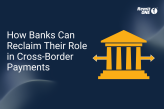Three Major Trends in Money Transfer for you to Manage March 29, 2017

There’s a lot going on in Money Transfer at the moment. Some of these you need to be aware of and manage, depending on your own situation. We highlight them here, and explore them in more detail at a later date.
Who knows what the future holds for the money transfer market? One thing is for sure, things won’t stay still – that’s not the way of the world anymore. Being global in nature, this industry in particular is open to influences from many directions, cultural changes and geo-political movement. Looking beyond the next decade might not be very helpful to your strategic planning.
But we can see the 2-10 year horizon, and there are several major trends that will be (and already are) disruptive to the money transfer market.
We believe them to be:
- Consumer Driven Digital – the change in the way consumers expect to deal with you, based on their comfort levels with technology and their expectation that you can deal with them in a manner of their choosing.
- A continued enforcement of Regulation – after the recent financial market crash, Governments are determined to be seen to regulate financial transactions more tightly. As markets mature, there will be more regulation and more emphasis on technology and automation.
- The blurring of the lines between Remittance and Payments industries – the payments industry has a lot to offer the money transfer market – quicker, more transparent and compliant transactions that could lead to lower charges and more money going to the beneficiaries.
You may be experiencing the influence of these trends already. There isn’t a formal start date on any of them. If so, we’d welcome your experiences and comments here: info@remitone.com
In the meantime, we offer our thoughts here:
1. Consumer Driven Digital
This phenomenon has affected many industries, and money transfer is not immune to it. There is a strong move towards the demand for digital from consumers who are entirely comfortable with using technology to sign up, create transactions and even liaise with support via chat. This is especially true for products and services which they don’t need to physically ‘touch’.
The tech savvy consumer expects to be able to do everything with you online or via an app and will express frustration when that is not possible. As more and more ‘Generation Z’ (post-Millennials) arrive in the workforce, this will be increasingly the case.
Furthermore, research points to digital being the preferred channel now in almost half of responders to a recent customer service survey by Xerox†.
We’ve seen technology promoting new ways of buying and servicing financial products before – tele-brokering of motor insurance in the 1980s is one example. But that was the industry creating the service (the telephone had been around for quite a while!). What’s different here is that it is consumer-pull (with their love of their tech), rather than provider-push.
In a similar pattern to retailing, consumers appear to accept that some businesses are digital only – the trade-off being price, availability (of service) and availability (of product). However, consumers appear to be less forgiving of traditional bricks & mortar businesses that do not offer a digital channel as an alternative.
Therefore new MTOs serving a particular niche can get away with an online only presence whereas traditional larger MTOs and banks will need to maintain both.
2. More regulation, more compliance
Some markets are more regulated than others. This is often a reflection of the maturity and experiences of local financial markets. The UK is a good example of this, where past financial scandals or miss-selling has created a sophisticated regulatory environment.
Add to that the global financial crisis of 2007/8 and we find ourselves in a world where banks have been re-capitalising to meet new regulations put upon them, and are continuously de-risking in order to satisfy their regulators.
Impact of de-risking
De-risking has a knock-on effect on banks’ money service business clients. Typically, it results in a reduction in the amount of credit available, or increases the cost of that credit. In some cases, it results in banks withdrawing from some markets altogether.
This combination of regulation and de-risking has meant it is more difficult for start-up money transfer operators (MTOs) to gain an operating licence and a money service business bank account.
It has also meant that for small/medium sized MTOs already in business, retaining their bank account has been increasingly difficult (as the banks continue to de-risk).
Impact of regulation
It’s not only de-risking that causes shifting sands for MTOs. Regulation doesn’t stay still either. We have seen a general tightening of regulation across many geographies in recent years. This makes compliance even tougher and subject to change. It enforces structure on a money service business and it pushes the need for having a modern technology system in place to manage compliance effectively and to cope with changes.
The goal is to do all this but in a cost effective way so that remitters are not discouraged from using regulated channels. It is in almost everyone’s interest to bring more of the black-market money transfer in to the regulated market.
3. Blurring of the lines between payments and money transfer
The payments industry potentially has a lot to offer the money transfer market. Quicker, more transparent and compliant transactions that could lead to lower charges. What’s not to like?
Tapping into the payments market provides the money transfer industry with more ways of getting funds from A to B. It also provides an opportunity to by-pass the middle layer of financial settlement.
Using a payment gateway/acquirer service rather than the traditional banking network infrastructure has three key potential benefits:
- It can potentially lower the overall transaction cost because it takes out one or more steps in the transaction flow process.
- It can mean that an MTO can operate without the need to have a money service business account – and we know from the previous section that as the banks are de-risking, gaining and maintaining a money service business account can be difficult for the smaller MTOs.
- It will ensure transparent, compliant and secure transactions offering convenience to customers and allowing unbanked people around the world to become banked.
Most importantly, it has the potential to put more money into the hands of the beneficiaries in poorer countries. The World Bank agrees that this would be a good thing.
Where to go for help
Modern technology can provide many of the answers to getting yourself in shape for these three market trends. A modern platform can help you to go digital. A modern platform can help you to cope with more regulation and compliance. A modern platform can help you to take advantage of alternative payment options.
But that’s only part of the story. As an End-to-End provider we understand the need to look at the market in its entirety and to offer products & services that help new money transfer providers at every step of the way towards launch and help existing providers to manage change that can affect their particular trading corridors at any time.
We’ll be issuing further white papers on each of these topics in the coming months.
In the meantime, come and talk to us: www.remitone.com
† source: Xerox Institute of Work – The State of Customer Services 2015
Related Posts
-

How to Build a Leaner, Smarter Money Service Business in 2025
In an era of rapid regulatory change, rising customer expectations, and digital disruption, how can money service businesses (MSBs)—companies that…
May 22, 2025 -

Trump’s Threats to Cross-Border Payments: What It Means for Your Business
It’s been a short while since Trump stormed back into office, and he’s already shaken things up with his hard-hitting…
May 22, 2025 -

Unlock Faster, More Secure Payments with RemitONE’s Open Banking Solution
We’re excited to introduce the latest enhancement to our RemitONE Money Transfer Platform: the RemitONE Open Banking Solution. Competitively priced…
January 31, 2025 -

How to Expand Your SEND Operations in the UK and Europe—Without the Regulatory Hassle
The remittance market in Europe is valued at €133.7 billion annually, with the UK market contributing an additional £23 billion.
January 31, 2025 -

The Top 5 Cross-Border Payment Trends That Shaped 2024
What a year it’s been for the world of payments! From breakthroughs in tech to surprising shifts in consumer behaviour,…
December 19, 2024 -

How Banks Can Reclaim Their Role in Cross-Border Payments with RemitONE
Banks, once the cornerstone of international payments, are finding themselves sidelined. Senders and receivers have now joined forces, pushing banks…
December 18, 2024